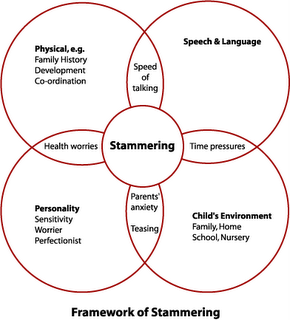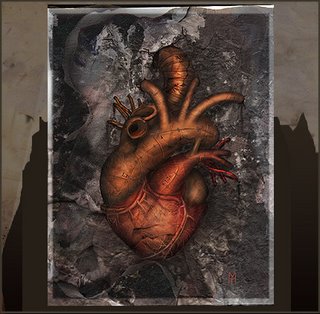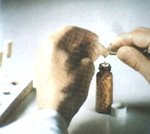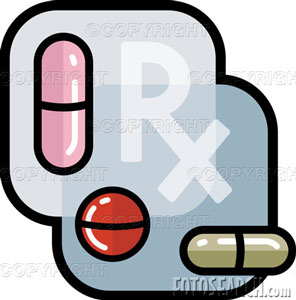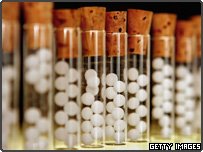Sources of the Homeopathic medicine
1) Vegetable kingdom,
2) Animal kingdom,
3) Mineral kingdom,
4) Sarcodes,
5) Nosodes,
6) Imponderabilia.
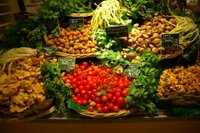 1) Vegetable Sources of Homeopathic Drugs:-
1) Vegetable Sources of Homeopathic Drugs:-It includes fungi, mushrooms, weeds, herbs, leaves, flowers, stems, barks, roots, seeds and whole plant also.
For the preparation of mother tinctures and mother powders different parts of plant is used for different medicines. For example, some medicines are prepared from the whole plant; some are prepared from roots, some from leaves, from flowers, etc.
1) From plants:-
a) Medicines prepared from whole plant:- acalypha indica, aconite nap, arnica Montana, atropha belladonna, chamomilla, chelidonium majus, drosera rotundifolia, dulcamara, euphratia off, hyoscyamus nigar, hypericum nigra, ledum pal, pulsatilla, tribulus, ruta graveolens, alfalfa, lobelia inflate, ocimum sanctum, etc.
b) Roots:- Artemisia vul, arum triphyllum, bryonia alba, calotropis gigantia, aralia, ipecacuanha, paeonia off, rauwolfia serpentine, senega, etc( only from the roots ). Aletris farinose, apocynum androsaemifolium, gentiana lutea, helonias dioica, leptendra viginica, sarsaparilla, etc (from roots and rhizomes). Tinospora cordifolia (from roots and stems).
c) Stem: - Rhus venenata, Sabina, saccharum offcinarum.
d) Modified stem (rhizomes) :- Caulophyllum, cimicifuga racemosa, dioscorea villosa, filix mas, gelsimium, helliborus niger, hydrastis, valeriana officinale, etc.
e) Bulb: - Allium cepa, allium sativum, colchicum autumnale, etc.
f) Woods: - Ostrya, virginica, quassia amara, santalum album, etc.
g) Bark: - Alstonia scholaris, azadirachta indica, chinchona officinalis, cundurango, jonosia ashoka, mezereum, rhamnus frangula, cinnamomum, prunus virginiana, baptisia tinctoria, berberis vulgaris, granatum, hamamelis virginica, gossypium herbaceum, etc.
h) Leaves: - Abroma augusta, abrotanum, cannabis indica, ceanothus americanus, coca, digitalis purpurea, kalmia latifolia, laurocerasus, oleander, rhus toxicodendron, tabacum, thuja occidentalis, etc.
i) Flowers: - Cina, calendula officinalis, eupatorium perfoliatum, grindelia robusta, absinthium, sambucus nigra, rhododendron, lupulus, cytisus scoparius, syringa vulgaris, crocus sativa, etc.
j) Spores: - Lycopodium clavatum.
k) Fruits: - Agnus cactus, crataegus oxy, viscum album (from berries).Aesculus hipp, aesculus glabra (from nuts). Terminalia chebula, apium graveolens, capsicum, carica papaya, colocynthis (from semimature fruits). Cubeba, sabal serrulata (from dry fruits). Ignatia amara (from beans).
l) Seeds: - Avena sativa, carduus marianus, chaulmoogra, cocculus indica, coffea, nux vomica, psoralia corylifolia, sabadilla, etc.
2) From Herbs: - Ledum palustre, verbrscum thapsus, etc.
3) From Weeds: - Fucus vesiculosus, etc.
4) From Fungi: - Agaricus muscarius, bovista etc.
5) From Algae: - Helminthochortos officinatrum.
6) From Juice: - Aloe socotrina (from leaves), anacardium orientale (from seeds), elaterium (sediment of), myristica sebifera (red, puncturing bark), opium, euphrobium (from latex resinous, dried), curare (from extracts), copaiva officinalis (gum resin), etc.
7) From Oils: - Croton tiglium (from seeds), oleum ricni (from seeds) etc. Oleum cajuputi, oil carophyllum (clove oil), oil cinnamonium, oil Eucalyptus, oil santali (from sandal wood) etc.
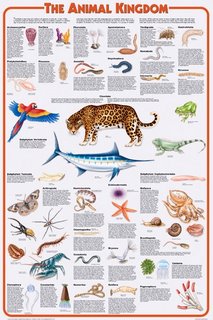 2) Animal Sources of Homeopathic Drugs: -
2) Animal Sources of Homeopathic Drugs: -Drugs of Animal kingdom includes drugs which are derived from animals in general or their secretions or products; embracing the different kinds of worms, lice, insects, bittles, flies, crabs, toads, snakes.
(a) Whole animals: -
(i) Living – Medusa (Alive jelly fish), Pedeculus (Head-louse), Blatta americana (American cockroach), Blatta orientalis (Indian cockroach), Culex (Mosquito culex), Apis melifica (Honey Bee), Cimex (Bed-bug), Formica (Red ant), Vespa (Wasp), etc.
(ii) Spiders – Aranea avicularis, avicularia avicularia, aranea diadema, latrodectus hassati, lactrodectus kalipo, lactrodectus mactans, tarentula cubensis, tarantula hispana, theridion, scorpions,etc.
(iii) Snails – Helix pomatia, helix tosta, asterias rubens, etc.
(iv) Whole animals (dried) – Armadillo officinarum, cantharis (Spanish fly), Coccus cacti (class-insecta), lacerta (green lizard), etc.
(b) Different parts, secretion etc of animals: -
(1) Different parts – Spongia, corallium rubrum, badiaga (from skeletons); Calcarea calcinata, Ova tosta, Ova gallinae pellicula (from shells); Gadus lota (from back bone of a fish); Gadus morrhua (from cervical vertebra of a fish); Castor (from thumb nail of horse); Carbo animalis (from a thick piece of an ox-hide); Ingluvin (from gizzard of a fowl); Sepia (from inky juice of the cuttle fish), Fel tauri (from Ox gall bladder); Lecithin (from animal brain or egg-yolk).
(2) Secretions – Orchitinum (from testicular extracts of man); Ophorinum (from ovarian extract of cow); Hippomanes (from the amoniotic fluid taken from a just-born horse); Moschus (from dried secretions of the male musk deer); Oleum morrhuae (from cod liver oil).
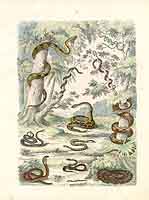 (3) Milk and milk products – Colostrum (from first part of human milk); Lac caninum (from bitch milk); Lac defloratum (from skimmed cow-milk); Lac felinum (from the cat milk); Lac caccinum coagulatum (from the curd of cow-milk).
(3) Milk and milk products – Colostrum (from first part of human milk); Lac caninum (from bitch milk); Lac defloratum (from skimmed cow-milk); Lac felinum (from the cat milk); Lac caccinum coagulatum (from the curd of cow-milk).(4) Venoms of poisonous animals – Scorpions, apis virus, lattrodectus mactans, bufo vulgaris; ampnisboena vermicularis (venoms of lizard snake); Crotalus, Crotalus cascavella, bungarus krait, bungarus fascicatus, elaps corallinus, lachesis, vipera betus, vipera lachesis (from the venoms of poisonous snakes).
3) Mineral Sources of Homeopathic Drugs: -
 (i) From Metals: - Alumina (Aluminium), Argentum nit (silver), Aurum met (gold), Cadmium (Cd), Cobaltum (Co), Cuprum met (copper), Ferrum met ( iron), iridium (Ir), Mercurius vivus (Hg), Palladium (Pd), Platinum (Pt), Plumbum met (lead), Stanum met (tin), Tellurium (semi-metal), Zincum met (zinc), Thallium (Th), Vanadium (Vd), etc.
(i) From Metals: - Alumina (Aluminium), Argentum nit (silver), Aurum met (gold), Cadmium (Cd), Cobaltum (Co), Cuprum met (copper), Ferrum met ( iron), iridium (Ir), Mercurius vivus (Hg), Palladium (Pd), Platinum (Pt), Plumbum met (lead), Stanum met (tin), Tellurium (semi-metal), Zincum met (zinc), Thallium (Th), Vanadium (Vd), etc. (ii) From Non-metals: - Bromine (Br), Iodium (Iodine), Phosphorus (P), Sulphur (S), etc.
(iii) From inorganic acid: - Boric acid, bromic or hydrobromic acid, muriatic acid, nitric acid, phosphoric acid, sulphuric acid, etc.
(iv) From Inorganic salts, compounds: - Baryta carb, baryta mur, calc phos, calc carb, Lithium carb, natrum sulph, kali phos, ammon mur, ammon carb, etc.
(v) From Minerals: - Anthracinum, Graphites, hecla lava, mica, silicea, etc.
(vi) From Organic acids: - Acetic acid, benzoic acid, salicylic acid, carbolic acid, citric acid, formic acid, lactic acid, oxalic acid, etc.
(vii) From Mineral oils: - Kerosene, paraffin, petroleum, etc.
(viii) From Coal-tar distillation: - Napthalene.
(ix) From Dry distillation of wood: - Camphor, kreosote, etc.
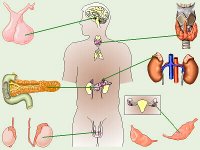 4) Sarcodes: -
4) Sarcodes: - Sarcodes include products of animal glands and Endocrine glands as a whole and secretion there from. Sarcodes belongs to animal kingdom. Drugs are prepared from healthy Endocrine or ductless glands or normal secretions of living human organs and lower animals, the secretions are mostly hormones. Examples are: Adrenalinum(from healthy secretion produced by adrenal glands), cholesterinum, fel tauri, insulin (from pancreatic hormones), pancreatinum (from pancreas of beef), pepsinum (from the digestive enzyme pepsin,from the stomach of pig), pituitary(from the posterior portion of the pituitary gland of sheep), thyroidinum (from whole endocrine glands of sheep or calf), vulpis fel, orchitinum (testicular), oophorinum(from ovary of cow, sheep), etc.
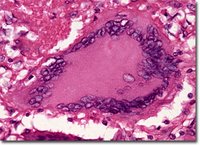 5)Nosodes: -
5)Nosodes: - The remedies which are prepared from disease producing agents (like bacteria or viruses) or diseased parts of human beings, lower animals or plants are called nosodes.
Dr Dewey defines nosodes as, “The morbid product of disease when employed as remedies”.
(i)From disease products of human beings: - Baccilinum (from tuberculous sputum), carcinosin (from cancerous tissues); medorrhinum (from gonorrheal virus), psorinum (from a product of psoric virus), syphilinum (from syphilitic germs), tuberculinum (from pus of tubercular abscess), variolinum (from small pox pustules), etc.
(ii)From disease products of other animals: - Ambra Grisea (morbid products of whale), anthracinum (from anthrax poison from spleen of affected sheep or cattle), aviare (tuberculin virus of chicken), hydrophobinum or lyssin (from the saliva of a rapid dog), mallandrinum (from grease in horse), etc.
(iii)From diseased plant products: - Secale cor (from a fungus growing upon the seed of the secale cerale and other grains), ustilago maydis (from a fungus, growing on the stem,, grain of Indian corn).
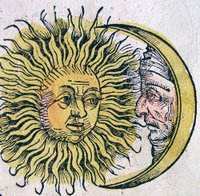 6)Imponderabilia: -
6)Imponderabilia: - Medicines prepared from energy, available from natural and physical reactions are called imponderabilia. They are immaterial power or energy; they may be natural or artificial.
Hahnemann observes in his Organon, aphorisms 280, footnote that, “even imponderable agencies can produce most violent medicinal effects upon man”.
Examples are:
(1) From natural resources: - Luna (full moon), magnetis poli ambo (magnet), magnetis polus Australia (south-pole of magnet), magnetis polus Arcticus (north pole of a magnet), radium, sol (from sun rays).
(2) From artificial resources: - Magnetis artificialis; X-ray; electricitus.



